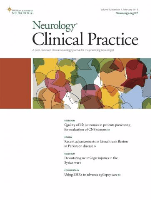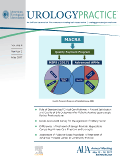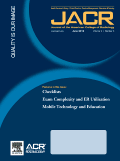
Neurology-Clinical Practice
Scope & Guideline
Enhancing Understanding of Neurological Disorders
Introduction
Aims and Scopes
- Clinical Research and Evidence-Based Practices:
The journal emphasizes the importance of clinical research in neurology, presenting studies that offer evidence-based insights into diagnosis, treatment, and management of neurological disorders. - Interdisciplinary Approaches to Neurology:
Many articles explore the integration of various disciplines, including psychology, palliative care, and rehabilitation, into neurological practice to enhance patient care and outcomes. - Health Disparities and Access to Care:
The journal frequently addresses issues related to health disparities, access to care, and the impact of social determinants on neurological health, encouraging research that seeks to improve equity in healthcare. - Innovative Technologies and Telemedicine:
There is a consistent focus on the application of new technologies in neurology, such as telemedicine, AI, and remote monitoring, to improve patient management and accessibility. - Patient-Centered Care and Quality Improvement:
The journal highlights the significance of patient-centered care models and quality improvement initiatives aimed at enhancing the overall patient experience in neurological healthcare.
Trending and Emerging
- Telehealth and Remote Care Models:
With the rise of telemedicine, particularly accelerated by the COVID-19 pandemic, there has been a significant increase in research focusing on telehealth solutions, remote patient monitoring, and their effectiveness in managing neurological conditions. - Mental Health and Neurology:
Emerging themes related to the intersection of mental health and neurology, including the impact of neurological disorders on mental well-being, and vice versa, are gaining traction, emphasizing the need for integrated care. - Diversity, Equity, and Inclusion in Neurology:
There is a growing emphasis on addressing health disparities, promoting diversity, and ensuring equitable access to neurological care, reflecting broader societal movements towards inclusivity. - Innovations in Neurological Therapies:
Recent publications have increasingly focused on novel therapeutic approaches, including genetic therapies, advanced pharmacological treatments, and personalized medicine tailored to individual patient needs. - Patient-Centered Research and Decision-Making:
Research that emphasizes patient autonomy, shared decision-making, and the incorporation of patient-reported outcomes into clinical practice is on the rise, highlighting a shift towards more patient-centered care models.
Declining or Waning
- Traditional Neurological Diagnoses Without Modern Contextualization:
There is a noticeable decrease in articles focusing solely on traditional neurological diagnoses without integrating contemporary approaches or technological advancements, suggesting a shift towards more holistic and modern perspectives. - Narrowly Focused Case Reports:
The journal has seen fewer narrowly focused case reports, indicating a preference for broader studies that address generalizable findings and clinical implications rather than isolated cases. - Historical Perspectives on Neurology:
There appears to be a waning interest in historical analyses or perspectives on neurology, as the focus shifts towards current practices, innovations, and future directions in the field.
Similar Journals

Urology Practice
Advancing urological excellence through innovative research.Urology Practice is a distinguished journal dedicated to advancing knowledge and practice in the field of urology. Published by Lippincott Williams & Wilkins, this journal has been pivotal in providing a platform for the dissemination of innovative research and clinical findings since its inception in 2014. With an ISSN of 2352-0779 and an E-ISSN of 2352-0787, the journal is indexed in Scopus, ranking #73 out of 120 in the Urology category, placing it in the 39th percentile. As part of the Q3 quartile in Urology for 2023, Urology Practice contributes significantly to the evolving landscape of urological medicine, offering vital insights to researchers, healthcare professionals, and students alike. While currently not an open-access journal, its valuable content remains accessible through traditional subscription-based models, catering to a global audience keen on enhancing their expertise in urology. The journal's commitment to excellence and its rigorous peer-review process ensure that published articles uphold the highest standards of scientific integrity, making it an essential resource for those engaged in urological research and clinical practice.

Journal of the American College of Radiology
Empowering Radiology Through Insightful ResearchJournal of the American College of Radiology, published by ELSEVIER SCIENCE INC, stands as a premier platform for researchers, professionals, and students in the dynamic field of radiology, nuclear medicine, and imaging. With an impressive impact factor and ranked in the top quartile (Q1) for its category in 2023, this journal is dedicated to advancing knowledge and innovation through high-quality research and insightful clinical contributions. The journal covers a wide range of topics within radiology, ensuring that it remains at the forefront of the discipline's evolving landscape. As an essential resource for those engaged in academic inquiry and clinical practice, the Journal of the American College of Radiology is committed to disseminating pivotal findings that shape patient care and inform best practices, while also providing insightful perspectives on pressing issues in medical imaging. Scholars looking to contribute to this prestigious journal can access it securely, with an established history since its inception in 2004 and a robust future outlook through 2024, securing its vital role in the ongoing dialogue within the medical community.

NEUROLOGICAL SCIENCES
Advancing the frontiers of neurology and mental health.NEUROLOGICAL SCIENCES, published by SPRINGER-VERLAG ITALIA SRL, is a premier journal that has been a cornerstone in the field of neurology and related disciplines since its inception in 1996. With an impressive Q1 ranking in Dermatology and Q2 rankings in Neuroloy (clinical) as well as Psychiatry and Mental Health, this journal consistently delivers high-quality peer-reviewed research that informs and shapes clinical practice. The journal boasts a significant presence on Scopus, positioned in the 89th percentile for Dermatology, 73rd for Psychiatry and Mental Health, and 72nd for Neurology (clinical), reflecting its influential contributions to medical knowledge. Open Access options are available, ensuring that this valuable research is accessible to a wider audience committed to advancing their understanding of neurological sciences. As it converges into future years (2024 and beyond), NEUROLOGICAL SCIENCES aims to continue foster collaboration and innovation amongst researchers, professionals, and students within the neurology and mental health domains, making it an indispensable resource for those dedicated to improving patient outcomes and advancing scholarly dialogue.

SEMINARS IN NEUROLOGY
Pioneering Discussions in Neurology and BeyondSEMINARS IN NEUROLOGY is a leading journal in the field of neurology, published by THIEME MEDICAL PUBL INC. With its ISSN 0271-8235 and E-ISSN 1098-9021, this esteemed journal has been a vital resource for the neurology community since its inception in 1984. Covering critical advancements and contemporary issues in both neurology and clinical neurology, it holds a reputable position in the Q2 category for both disciplines as of 2023. The journal ranks #164 out of 400 in clinical neurology, indicating its significant contribution to the field, and is indexed in Scopus for robust academic exposure. SEMINARS IN NEUROLOGY offers a platform for authors to disseminate groundbreaking research and reviews, ultimately enhancing knowledge and practice in neurological sciences. With unrestricted access options, it seeks to engage researchers, practitioners, and students, fostering a comprehensive understanding of the complexities of neurological disorders and therapies.

JOURNAL OF GENERAL INTERNAL MEDICINE
Empowering Practitioners with Cutting-Edge KnowledgeJOURNAL OF GENERAL INTERNAL MEDICINE, a leading publication in the field of internal medicine, is published by Springer and boasts an impressive Q1 rank in internal medicine as of 2023, situating itself prominently at Rank #28 out of 167 in Scopus with an 83rd percentile. Since its inception in 1986, this esteemed journal has been at the forefront of disseminating high-quality research, clinical practices, and healthcare innovations that shape the landscape of internal medicine. The journal is recognized for its original research, systematic reviews, and practice guidelines that are essential for professionals navigating the complexities of patient care and clinical decision-making. With access options available, it serves as a critical resource for researchers, healthcare practitioners, and students alike, facilitating the enhancement of medical knowledge and evidence-based practice globally. The Journal's commitment to excellence is reflected in its ongoing contribution to advancing the field and ensuring that the latest findings reach those who need them most.

AUSTRALIAN DENTAL JOURNAL
Shaping the future of dentistry with groundbreaking insights.Welcome to the Australian Dental Journal, a prestigious publication dedicated to advancing the field of dentistry. Edited and published by Wiley, this journal boasts a rich history since its inception in 1945, fostering an academic community committed to excellence in research and practice. With an impact factor that places it in the Q2 category of dentistry journals, it is ranked 37th out of 132 in the General Dentistry category according to Scopus, highlighting its significance in the field. The Australian Dental Journal covers a broad spectrum of topics relevant to dental professionals, researchers, and students, providing a platform for disseminating innovative studies and evidence-based practices. While not categorized as open access, the journal maintains a commitment to accessibility in sharing pivotal findings that shape dental health policies and clinical practices. Engage with the latest research and insights that propel the future of dentistry by exploring this invaluable academic resource.

JOURNAL OF NEUROLOGY NEUROSURGERY AND PSYCHIATRY
Bridging disciplines for comprehensive neurohealth insights.JOURNAL OF NEUROLOGY NEUROSURGERY AND PSYCHIATRY, published by the esteemed BMJ PUBLISHING GROUP, is a leading journal that covers pivotal research in the fields of neurology, neurosurgery, and psychiatry. With an impressive impact factor and consistently recognized as a Q1 journal in its respective categories—including Clinical Neurology, Psychiatry and Mental Health, and Surgery—this publication ranks in the top percentiles on Scopus, showcasing its influence in the medical community. Since its inception in 1920, the journal has been committed to delivering high-quality, peer-reviewed content to researchers, clinicians, and students alike, maintaining an exceptional reputation attributed to its rigorous selection process and the depth of its contributions. Access to the journal's articles fosters a comprehensive understanding of progressive research and clinical practices, solidifying its significance for professionals aiming to navigate the complexities of neurological and psychiatric disorders. As a vital resource based in the United Kingdom, the journal continues to propel innovation and knowledge sharing in the ever-evolving landscape of neurohealth.

Journal of Doctoral Nursing Practice
Transforming practice with evidence-based nursing research.The Journal of Doctoral Nursing Practice, published by SPRINGER PUBLISHING CO, serves as an essential platform for the dissemination of innovative research and best practices in nursing and health policy. With its ISSN 2380-9418 and E-ISSN 2380-9426, this journal is committed to advancing the field through rigorous peer-reviewed articles that contribute to both theoretical and practical advancements in doctoral nursing education and practice. Since its inception in 2016, the journal has provided a vital forum for scholarly work, currently holding a prestigious ranking of Q3 in Nursing (Miscellaneous) and Q4 in Health Policy. The journal emphasizes the significance of nursing research in influencing health policy and outcomes, making it a critical resource for researchers, practitioners, and students alike who aspire to enhance nursing practices and healthcare systems. With no Open Access option, access to its high-quality content reflects a commitment to academic rigor and integrity, ensuring that the work published is both impactful and credible.

JCO Oncology Practice
Driving Change in Cancer Care Through Policy and PracticeJCO Oncology Practice is a premier peer-reviewed journal published by Lippincott Williams & Wilkins, specializing in the intersection of oncology and health policy. Established as a vital resource since 2020, this journal serves as a platform for the dissemination of innovative research, policy analysis, and clinical practice advancements aimed at enhancing cancer care. With its impressive impact factor and recognition in the top quartile (Q1) across multiple categories including Health Policy and Oncology, JCO Oncology Practice ranks #3 in Oncology Nursing and consistently shares cutting-edge insights that drive improvements within the field. The journal is accessible to a broad audience through its open access options, ensuring that vital knowledge reaches practitioners, researchers, and students alike. By prioritizing the latest evidence-based practices and addressing contemporary challenges in cancer treatment, JCO Oncology Practice plays an essential role in shaping the future of oncology practice and policy in the United States and beyond.

Seminars in Vascular Surgery
Empowering practitioners with cutting-edge research.Seminars in Vascular Surgery is a premier academic journal dedicated to advancing the field of vascular surgery and related cardiovascular medicine. Published by W B Saunders Co-Elsevier Inc., this journal boasts a commendable reputation within the academic community, evidenced by its classification in the Q1 quartile for both Cardiology and Cardiovascular Medicine and Surgery as of 2023. It serves as a critical resource for researchers, clinicians, and students, providing high-quality, peer-reviewed articles that cover the latest advancements, techniques, and interdisciplinary approaches in vascular surgery. With an ISSN of 0895-7967 and an E-ISSN of 1558-4518, the journal is poised to offer an invaluable platform for scholarship, with a varied scope reflecting decades of research from 1990 to 2024. By submitting your work, you join a cohort of scholars dedicated to elevating the standards of vascular surgical practice and improving patient outcomes.